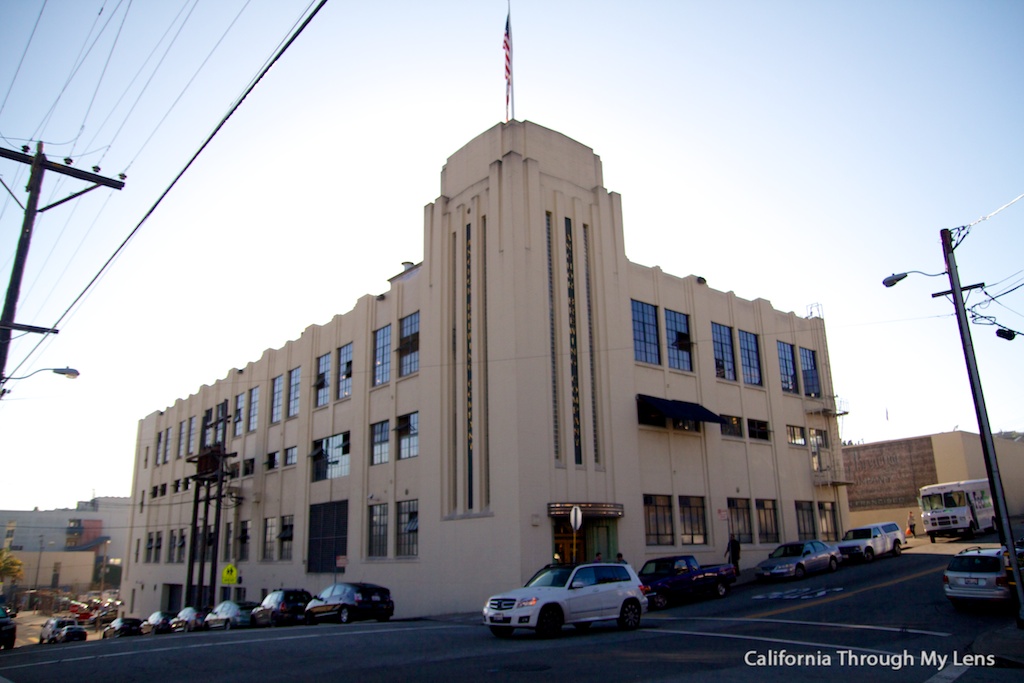The Closing Of Anchor Brewing Company: What Went Wrong?

Table of Contents
Changing Consumer Preferences and Market Competition
The craft beer industry is a dynamic and fiercely competitive landscape. The Anchor Brewing Company closure serves as a stark reminder of this reality. The rise of craft beer has led to an explosion of styles, brands, and breweries, creating a highly saturated market. Consumers, particularly younger generations, are increasingly adventurous, seeking out innovative and experimental beers. This shift in preference presents significant challenges for established breweries relying on traditional styles.
-
The IPA Revolution: The overwhelming popularity of India Pale Ales (IPAs), particularly hazy IPAs, has significantly altered the market. Many consumers now prioritize these bolder, more intensely flavored beers over Anchor's more classic offerings.
-
Local is the New Global: The growth of smaller, local, and regional breweries has given consumers access to unique, hyper-local brews, often with stronger community ties. This local focus directly impacts the market share of larger, established breweries like Anchor.
-
Beyond the Classics: Consumer preference for constantly evolving beer styles – sours, stouts, lagers, and an endless variety of hybrids – puts pressure on breweries that don't keep pace with innovation. Anchor's adherence to its traditional styles, while historically significant, may have contributed to its decline in a market driven by novelty.
-
The Impact of Acquisitions: The acquisition of smaller craft breweries by large corporations has further reshaped the market, creating a complex ecosystem of competing interests and potentially impacting the availability of niche products.
Management and Strategic Decisions
While external factors played a significant role, internal strategies (or lack thereof) also contributed to the Anchor Brewing Company closure. Analysis suggests that Anchor struggled to adapt to the rapidly changing market dynamics.
-
Innovation Deficit: A lack of significant innovation in product offerings may have alienated consumers seeking new and exciting experiences. While Anchor's heritage brews remain respected, a reliance on these alone proved insufficient in a market demanding constant novelty.
-
Marketing Malaise: Ineffective marketing campaigns failed to connect with younger demographics. Without a successful strategy to attract a new generation of craft beer drinkers, Anchor's brand appeal diminished.
-
Adaptability Issues: Failure to adapt to changing consumer preferences – a preference for bolder flavors, experimental styles, and locally sourced ingredients – proved a fatal flaw. The company struggled to balance its heritage with the demands of the modern craft beer scene.
-
Internal Challenges: While specifics remain undisclosed, potential internal management issues impacting operational efficiency and strategic decision-making may have exacerbated the challenges faced by the brewery.
Economic Factors and Supply Chain Challenges
External economic pressures significantly impacted the brewing industry, and Anchor was not immune.
-
Rising Costs: Increased costs of raw materials, including hops, barley, and other essential ingredients, directly impacted profitability.
-
Supply Chain Disruptions: Supply chain disruptions, amplified by the COVID-19 pandemic, hindered production, distribution, and overall efficiency.
-
Inflationary Pressures: Inflationary pressures led to reduced consumer spending on premium products like craft beer, making it difficult for Anchor to maintain its price point and profitability.
-
Pandemic Impact: The pandemic severely impacted the hospitality industry, a crucial distribution channel for breweries, further reducing sales and revenue.
The Role of Legacy and Brand Identity
Anchor Brewing's rich history and strong brand identity, while historically powerful assets, may have also presented challenges.
-
The Heritage Burden: While a strong heritage brand offers significant advantages, it can also create inertia, hindering a company's ability to adapt and innovate. Striking a balance between tradition and innovation is crucial for survival in a dynamic market.
-
Bridging the Generations: Appealing to both traditional and modern beer consumers simultaneously proved incredibly difficult. The challenge of satisfying established loyalists while attracting a new customer base remains a common struggle for many heritage brands.
-
Modernization vs. Authenticity: Modernizing a brand while retaining its core identity and avoiding alienating loyal customers is a complex balancing act. Any rebranding or modernization efforts might not have been effective enough or timely enough to change consumer perception.
Conclusion: Lessons Learned from the Anchor Brewing Company Closure
The Anchor Brewing Company closure underscores the complex challenges facing established brands in the dynamic craft beer market. The confluence of changing consumer preferences, intense competition, economic pressures, and internal strategic decisions ultimately contributed to its demise. Understanding the factors behind the Anchor Brewing Company closure is crucial for anyone in the brewing industry. The inability to adapt to evolving consumer tastes, insufficient innovation, and economic headwinds all played a role. Breweries must prioritize innovation, flexible strategies, strong marketing, and a keen understanding of their target markets to survive and thrive in this fiercely competitive landscape. Learn from these mistakes and adapt to survive in this fiercely competitive market. The legacy of Anchor serves as a cautionary tale and a valuable lesson for all.

Featured Posts
-
 Hegseth Under Fire Pentagon Chaos Claims And Signal Chat Controversy
Apr 22, 2025
Hegseth Under Fire Pentagon Chaos Claims And Signal Chat Controversy
Apr 22, 2025 -
 88 Year Old Pope Francis Passes Away After Illness
Apr 22, 2025
88 Year Old Pope Francis Passes Away After Illness
Apr 22, 2025 -
 Karen Read Murder Trials A Complete Timeline
Apr 22, 2025
Karen Read Murder Trials A Complete Timeline
Apr 22, 2025 -
 The Pan Nordic Army A Combined Strength Of Swedish Armor And Finnish Infantry
Apr 22, 2025
The Pan Nordic Army A Combined Strength Of Swedish Armor And Finnish Infantry
Apr 22, 2025 -
 Ryujinx Emulator Shuts Down Following Nintendo Contact
Apr 22, 2025
Ryujinx Emulator Shuts Down Following Nintendo Contact
Apr 22, 2025
